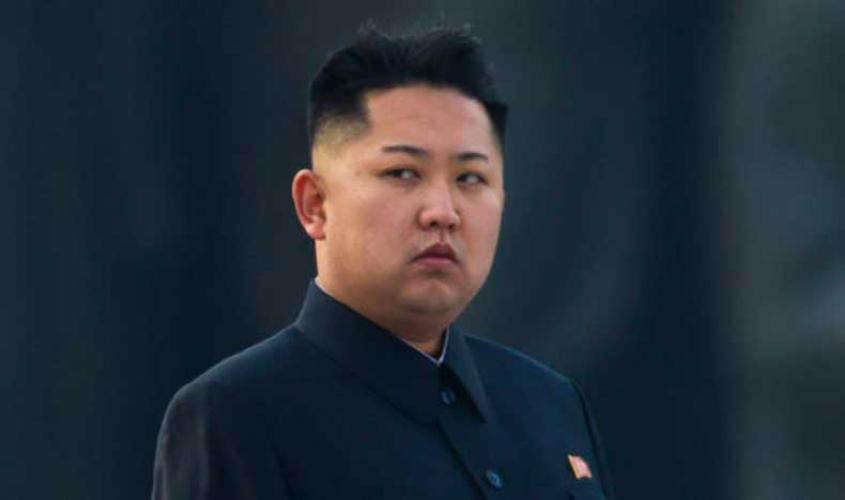Nuclear war? Really? Not for the last 30 years, since Gorbachev took up residence in the Kremlin, has the N-word been so prominent in the world press. The majority opinion puts the blame on the fanatical North Korean leader Kim Jong-un, but the arrival of President Donald Trump at the White House has increased the uncertainty in the Korean peninsula. There is little doubt that the massive armoury of the United States could obliterate North Korea (DPRK), but the price would be unbelievably high to the region, not only to South Korea (ROK), but also Japan. Trump is clearly concerned by the continual development of a nuclear facility by DPRK, but the time has long passed when a military solution could possibly be found. Any military reaction by Trump to Jong-un’s provocation would be utterly disastrous. Here’s why.
Take a look at the conventional capability of DPRK versus ROK. According to the latest ROK Defence White Paper, the DPRK has more than twice as many army personnel (1,020,000) as ROK (495,000). Add to this numerical superiority the fact that the DPRK soldiers are brain-washed with fake information about ROK, these fanatical hordes would sweep across the demilitarised zone, while the 7.7 million DPRK reservists are being prepared as a follow-up force. With a 2:1 advantage in tanks and combat aircraft, the DPRK forces could do untold damage to the fabric and population of ROK.
Now consider the missile assets. The DPRK’s missile programme benefited from the transfer of a small number of Soviet Scuds by President Sadat of Egypt in 1979. Over time, these were developed by DPRK engineers into a family of missiles: Hwasong (range 1,000 km), Pukguksong (1,000 km), Nodong (1,300 km), and the Musudan (3,500 km). These are all tested and operational, with the exception of the Musudan, which the DPRK began testing in 2016. The Indian military will know that the Nodong, which is nuclear-capable, has been exported to Pakistan. Under development is the huge missile with codename KN-08 which has a range of 11,500 km, large enough to hit targets anywhere in the United States. The great majority of these missiles are deployed on trucks, making them hard to detect as they travel around the countryside, moving from one hiding place to another. The weakness, however, is that the DPRK still relies on the type of corrosive liquid fuel used in the old Scuds, which means that trucks containing fuel must travel around with the missiles. This also slows down the operation of these missiles as it takes time for them to be fuelled, increasing their vulnerability. Pyongyang is making frantic efforts to develop a solid fuel solution to overcome these problems, but currently with hundreds of launchers and thousands of missiles, severe damage would be done to ROK before these could all be neutralised.
If a military intervention to stop Jong-un is out of the question, how can he be slowed down or be stopped in his pursuit of a full nuclear facility? The first question to be answered is: “can he be trusted?” History is littered with examples of attempts to persuade or cajole Jong-un to stop his accelerating pace towards nuclear weapons. President Clinton, in 1994, agreed a pact with Pyongyang, offering generous aid in return for promises with Kim Jong II to halt his plutonium-based nuclear programs. When President Bush later discovered that Kim Jong was secretly enriching uranium, he stopped the aid, only for Pyongyang to restart their plutonium reactor. Bush tried again in 2007, providing aid and relaxing sanctions, only to find DPRK refusing to sign the verification protocol. President Obama attempted in 2012 to promise aid in exchange for a freeze of its nuclear and missile tests, only to find just six weeks after agreeing to a deal, Pyongyang tested a long-range missile. So the answer to the question of trust is an emphatic no. It is estimated that Pyongyang, over the period 1991 to 2015, has received $7 billion from ROK, with another $1.3 billion from the US, not to mention many billions from private investment. Not bad for broken promises.
So if you cannot use military force against, or trust Jong-un, what methods remain? The simple answer is that the world must firmly apply effective sanctions. It is now more than 10 years since the UN Security Council approved a series of sanctions against Pyongyang, but these have been only half-heartedly applied, even by the US. China, which is terrified of a collapse of DPRK, fearing a US-supported United Korea on its border and a flood of refugees across it, turns a blind eye to a porous common border. This allows not only food to cross, essential to stop mass starvation in DPRK, but anything from consumer electronics to the sale of missile trucks by China’s state-owned companies. A serious attempt to stiffen sanctions could cause real harm to Pyongyang, perhaps causing the regime to reconsider their nuclear ambitions. But there is another form of sanctions which could have a devastating effect on Jong-un. It is well known that Pyongyang’s party elites are much richer than they were 10 years ago. Enormous funds, derived in part from drug dealing, counterfeiting and arms sales are laundered using US dollars, with nearly all transactions passing through US banks. It’s therefore well within the US’ purview to stop this by pressurising US banks and their subsidiaries around the world to block the regime’s access to the dollar system. Attacking DPRK’s money flow will bring results. So, Mr Trump, forget a military solution and just follow the money.
John Dobson worked in UK Prime Minister John Major’s Office between 1995 and 1998 and is presently a consultant in the private sector.

